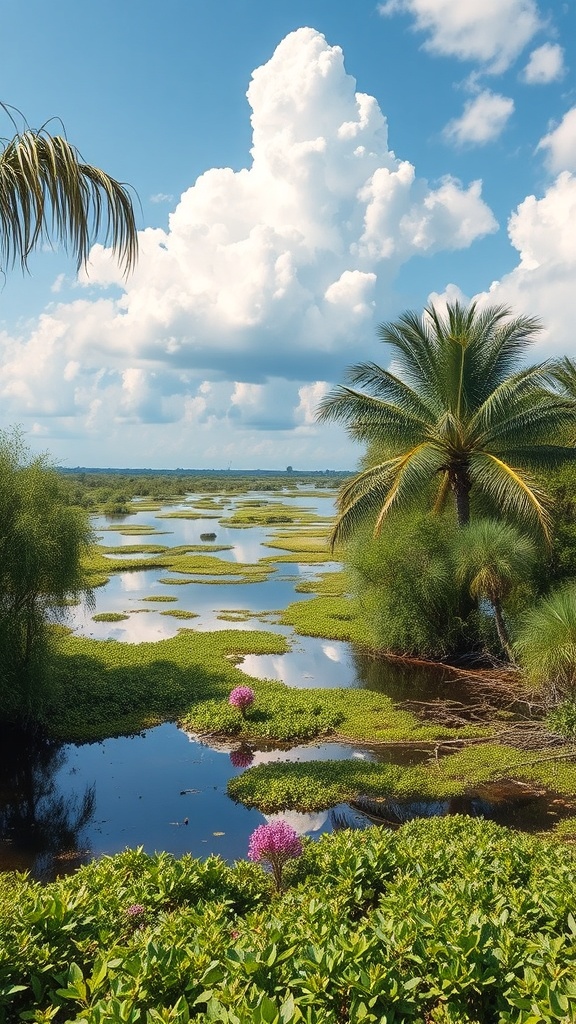Everglades: How Water Shapes Life in the River of Grass — Wildlife, Restoration & How to Help
Everglades: a living landscape where water shapes life
The Everglades is a rare, flowing wetland mosaic where sawgrass prairies, mangrove forests, freshwater sloughs and coastal estuaries connect to sustain an extraordinary web of life.
This slow-moving river of grass supplies freshwater to coastal communities, supports iconic wildlife and buffers against storms — yet it remains one of North America’s most fragile and closely watched ecosystems.
Why the Everglades matters
Freshwater flow is the foundation of the Everglades. When water moves naturally from the inland ridge toward the coast, it nourishes marshes, recharges aquifers and dilutes saltwater intrusion. That flow supports the life cycles of wading birds, fish and amphibians, and helps maintain water quality for surrounding communities.

Changes to that flow — from canals, development and water management — ripple through the landscape, altering habitats and species abundance.
Wildlife to look for
The region hosts rare and charismatic species: the elusive Florida panther prowls upland hammocks, the American crocodile inhabits brackish coastal waterways, and migratory birds stage here during seasonal movements. Birdwatchers will find rails, herons, egrets and the unique limpkin, while waterways teem with fish and invertebrates that sustain the food web.
At the same time, invasive species — including predatory snakes and aggressive plants — are reshaping food chains and reducing nesting success for native species.
Conservation efforts and challenges
Conservation is focused on restoring more natural water flow, improving water quality by reducing nutrient runoff from agriculture and urban areas, and removing invasive species.
Large-scale restoration programs work with federal, state and local partners to buy land, rebuild wetlands and create storage for excess water so flows mimic natural patterns. Progress is steady but complex: balancing urban water needs, flood control and ecosystem restoration requires adaptive science and sustained public support.
Climate pressures
Rising sea levels and changing rainfall patterns are shifting the coastal edge of the Everglades, allowing saltwater to push farther inland and converting freshwater marsh into mangrove-dominated habitats. That shift affects species dependent on freshwater wetlands and complicates restoration planning.
Shoreline protection and freshwater conservation are increasingly important strategies to maintain ecological resilience.
How to experience the Everglades responsibly
– Choose guided tours led by certified naturalists to learn about ecology and minimize disturbance.
– Prefer low-impact activities such as kayaking, canoeing or guided tram and boat tours rather than high-speed, high-noise options in sensitive areas.
– Bring binoculars, insect repellent and layerable clothing; wetlands are best enjoyed slowly and quietly.
– Follow Leave No Trace principles and respect wildlife by keeping distance from nests and dens.
How to help
Individual actions add up: reduce fertilizer use on lawns, support local conservation organizations, volunteer for habitat restoration events, and advocate for policies that protect natural waterflows and reduce pollution. Responsible tourism also supports local economies while funding conservation work.
The Everglades remains a place of resilience and urgency. With thoughtful stewardship, the flow that defines this landscape can be preserved, allowing its rivers of grass and the wildlife they support to endure for generations of visitors and residents who depend on clean water and healthy coastal systems.